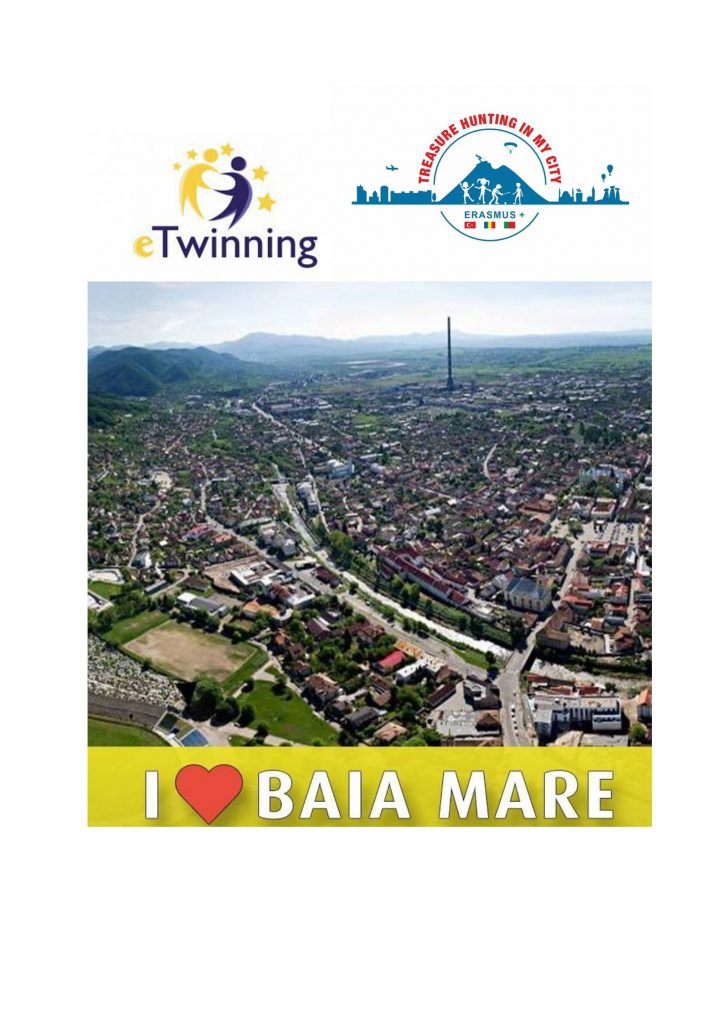
Stephen’s Tower is the bell tower of the once existing church with the patron saint “Stephen king” from Baia Mare. It was built in the fifteenth century by John Hunyadi, standing at 40 meters tall. It’s construction begins after the year of 1446, but it’s only finished around 1468, under Matia Corvin’s rule. In the year 1619, the upper part was rebuilt, now having the shape of a square based pyramid.
The entrance is through the door located in the southern part of the building. There are some spiral shaped stairs made out of stone that go up to the first level. From there to the watchtower, there are some wooden stairs going up. The building is about 50 meters tall, and the watchtower offers a nice view of the entire town. It is one of the most appreciated landmarks of the town, not only by its inhabitants, but also by foreigners, and it is also called “the medieval jewel” of Baia Mare.
The tower is always available for visiting, and it offers from up above an enchanting view of Baia Mare and all its beauties.
By Precup Andrada
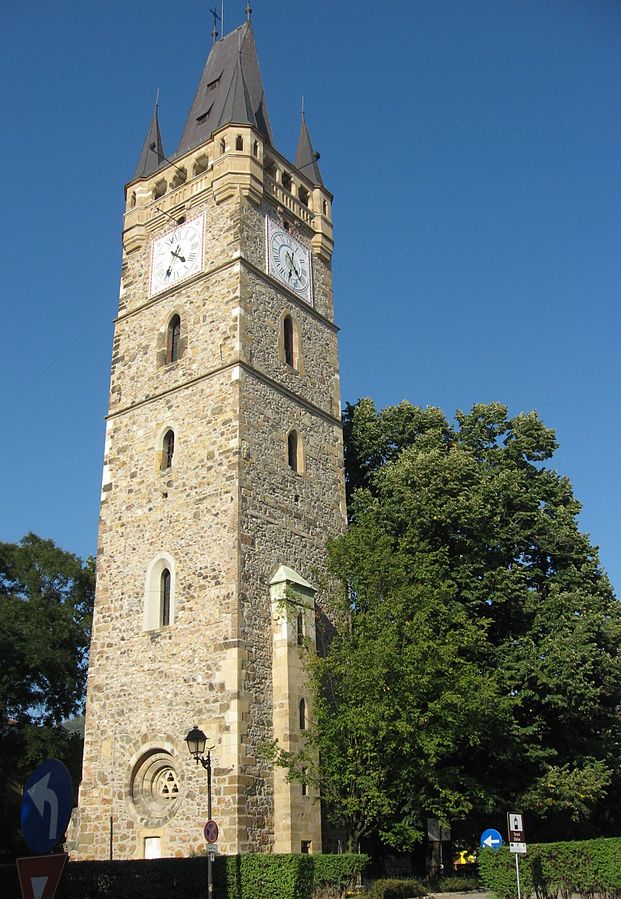
The Butchers’ Tower
According to the documents at The Maramures County National Archive the bastion was built around the year 1547 by Gaspar Dragyi with the approval of the king then Matei Corvin. The walls are made of stone and are 1 metre thick, having a circular shape and being built on two levels. The first level has an arched shape. The ammunition used to be stored there. The wall at the second level has holes in it which served as ramparts.
The Butcher’s Tower was also called The Tower of Ammunition because the soldiers used to store their guns and the gunpowder there. The Butcher’s Tower’s name came from the butchers’ duty to use it in order to defend the fortress from eventual attacks of the enemies. Undoubtedly, it has to be mentioned that the butchers’s guild at that time was the strongest of all in Baia Mare city.
By Anghelescu Iasmina
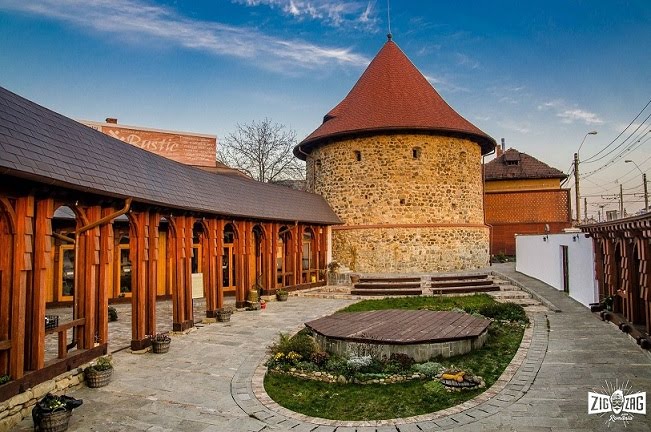
The Black Vulture Inn
One of the most significant historical buildings in Baia Mare is The Black Vulture Inn, which is located in the central market and was already opened in 1736. It has taken its name from the Habsburgs’ blazon. People who visited the town or merchants could find accommodation there. Moreover, in the 19th century people used to oganized theatrical events and balls there. The building also included a pub and several party halls.
By Revnic Raul
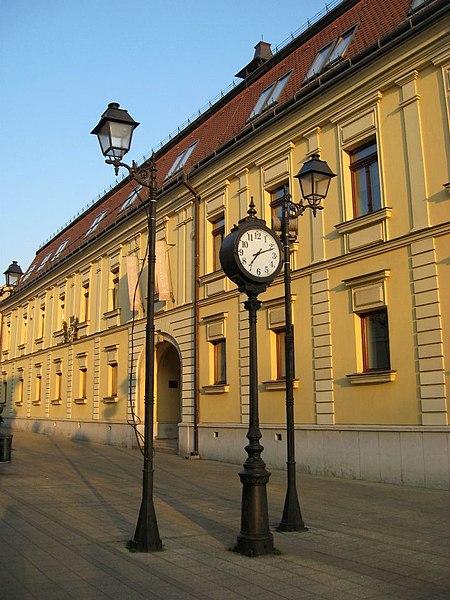
The Ethnography and Folk Art Museum is a public cultural institution in Baia Mare. In 1899 , The Museum Association was founded in Baia Mare whose members donated items/exhibits that were to be the first collections of the museum. The whole scientific activity related to the organization of the collections, the research, the first exhibits brought there began in 1968. Therefore, today the museum holds over 7.000 exibits, most of them being extremely valuable. The exhibition consists of three main parts which show: people’s main traditional occupations, crafts and technical equipment and installations, items that belong to folk art, ceramics, furniture, household items, traditional architecture, traditional costumes from all four ethnographical parts of Maramures county.
By Breban Cristian
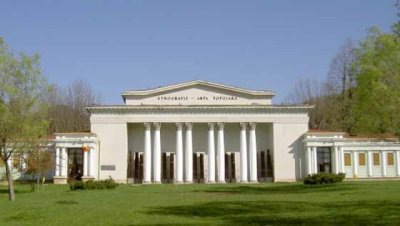
The Art Museum
Central Baia Mare Art Museum became the Baia Mare Art Centre after leaving the other sections of the municipal museum in other buildings. In the museum’s collections there are over 3500 pieces, paintings and sculptures that illustrate the European art of the XVIII-XX centuries, as well as the modern Romanian art. The most significant ones at national and European level are those over 400 works that bear the signature of the 90 plastic artists who have been active in the Artistic Centre since 1896 until today. Now the Inheritance of the museum consists of over 3900 works of art, the last 500 being purchased in the last four years.
By Sarca Mara
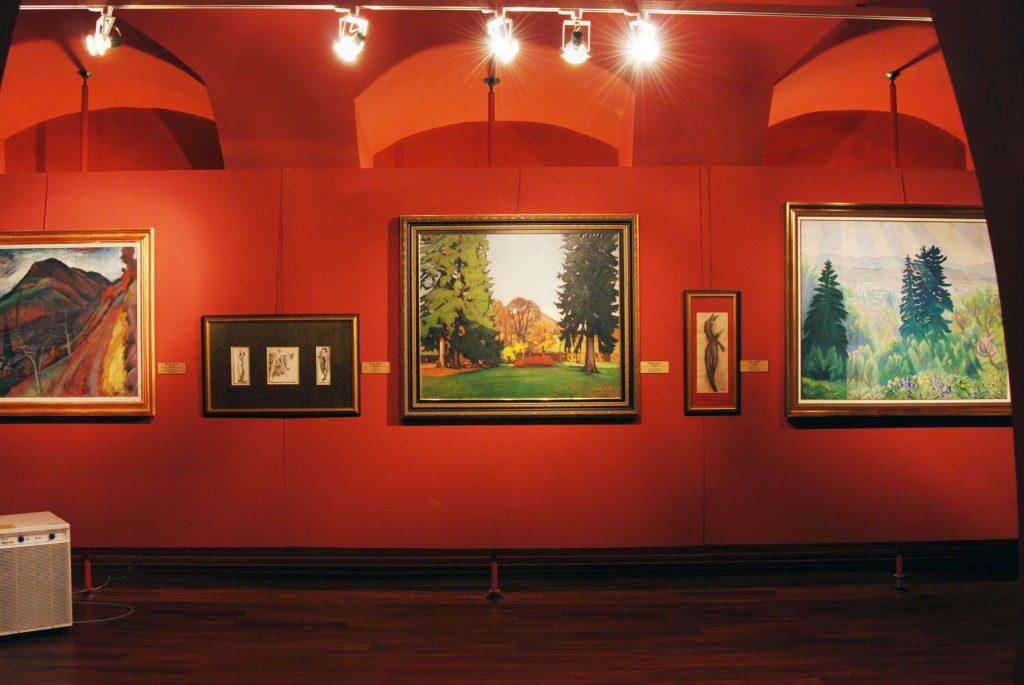
The Mineralogy Museum in Baia Mare is the biggest county museum in Europe, most of its exhibits being considered unique worldwide. The museum hosts a big exhibition, where over 1000 items, such as minerals, rocks and fossils are exhibited. Moreover, in the warehouse of the institution other 15.000 items are stored. For the exibits displayed, the unofficial name of the museum is The Crystal Clusters Museum. On the ground floor people who visit the museum can find items that show the geological structure of the NE part of Romania. Also, nonferrous metals deposits can be found there, all being extracted from Oas-Gutai, Tibles and Borsa mountains.
By Băltan Paul
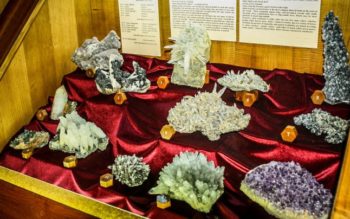
The Planetarium of Baia Mare, being one of the most important touristic, cultural and scientific attractions in Baia Mare, is the first public planetarium opened in Romania, in 1969, and the only one in Transylvania until then. Starting with March 20, 2015, the most modern planetarium equipment in Romania was put to use.
By Bochiș Diana
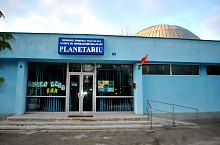
The Municipal Theatre
The first (semi-professional) theatre troupe was founded in 1796 in Baia Mare, under the direction of János Nagy. On December 30, 1952, a State Theatre ((now called Municipal) was established, with its original headquarters in the Popular cinema hall. At the inauguration, the premiere of the show Crângul de mălini by Al. Korneiciuk, directed by Octavian Rappaport was played. Since then, over 350 awards and thousands of shows have been played.
Some main performances are: Hangița (1955) by Carlo Goldoni, directed by Miron Niculescu; Servant to Two Masters (1958) by Carlo Goldoni, directed by Petre Meglei; Floricica Purpurie (1959) by Karnauhova and Brausevici, directed by Petre Meglei; Three Venetian Twins (1963) by Aldo Colalto, directed by Petre Meglei; The Visit of the Old Lady (1965) by Fredrich Durrenmatt, directed by Miron Niculescu; Ion Anapoda (1969) by George Mihail Zamfirescu, directed by Dan Alecsandrescu; Moments of Life (1970) by William Saroyan, directed by Liviu Ciulei.
A milestone in the history of the Baia Mare theatre was represented by the activity of Mihai Dimiu who composed a troupe of extremely valuable actors: Coca Andronescu (in Hangița and the Minister), Ștefan Mihăilescu- Brăila (in Tache, Ianke si Cadâr), Tănase Cazimir, Lulu Savu .The fact that the great actor and director Liviu Ciulei (awarded, in 1965, with the prize for directing at the Cannes Film Festival, for the film The Hanged Forest) staged two plays in Baia Mare – Moments of Life and The Sleep of Reason by Antonio Buero Vallejo was significant.
By Polgar Miruna
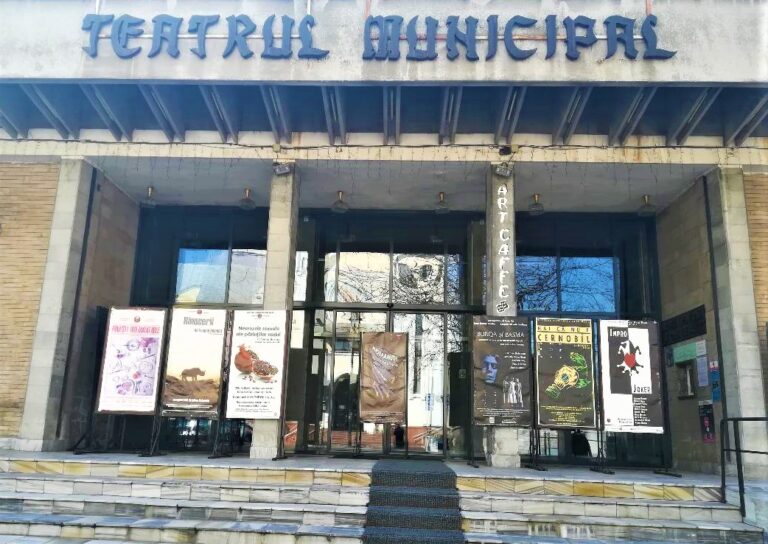
The Painters’ Colony in Baia Mare was founded in 1886 by the painter named Hollosy Simon, who lived in Munchen at that time. At present, the colony runs/offers 28 workshops for artists, all of them being placed in four different pavillions. The first is called Thorma, it has 10 temporary workshops and it’s destined to both national and foreign professional artists. Reti pavillion runs ten temporary workshops destined to professional painters from Baia Mare. Olos pavillion with its four workshops has educational purposes, being used by pre and school children, but also adults, who can attend free painting courses.Last but not least, Walter pavillion runs summer courses or schools and has four workshops. Today, Hollosy’s Gallery can host any type of cultural event for its plurivalent character which shapes its uniqueness and authenticity.
By Coroian Robert
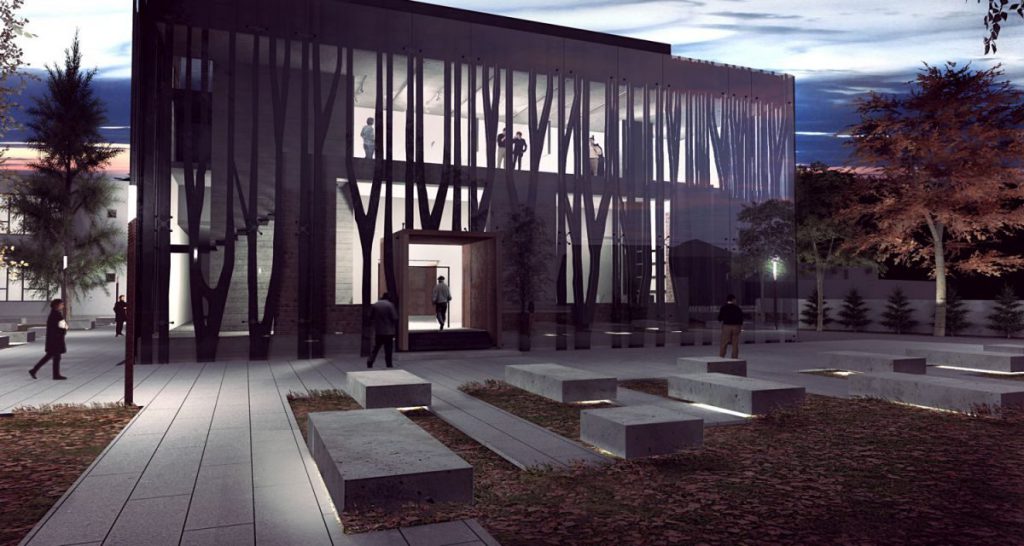
The Columns from Limpedea Reserve is a volcanic rock which can be found in Baia Mare. In the proximity of the road, behind a horizontal platform one can see a stony wall with a unique design. The reserve consists of some polygonal columns, a mix between rocks and flora. This small piece of rock has some terraces covered with patches of grass. Also, for those who are passionate about climbing, the rocky wall has tracks for doing it. The path in the north of the columns goes up some tarraces and leads to a gravel pit.
By Cusco Andrei
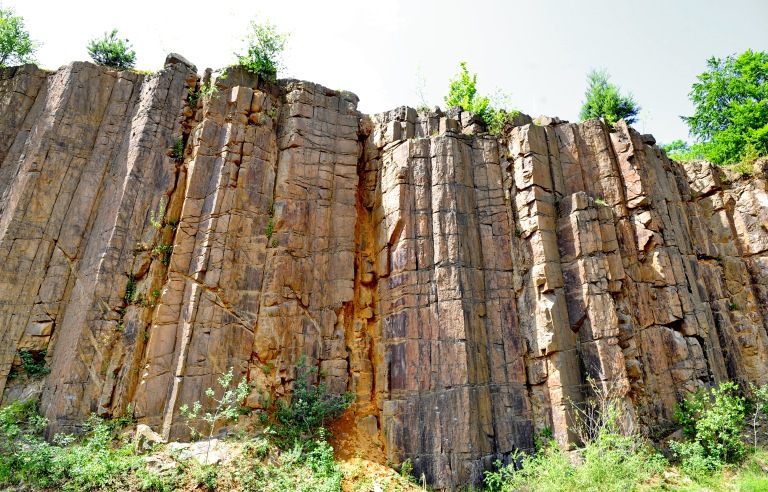
The History and Archeology Museum
The exhibts in the History and Archeology Museum in Baia Mare have shown the evolution of human settlement since its early beginning. The collection of medieval weapons, such as the broadsword of the city, swords, blades or some chain mail shirts talk about legendary knights, heroes and great armies which had won their glory by fighting for their ideals and interests. In addition, inside of the museum there is an old book library of incontestable importance, a cultural heritage which stands as evidence for a rich previous cultural life. Also, there are photograps, letters or documents that belonged to some important cultural personalities of those times.
The History and Archeology Museum runs annual interactive programmes and cultural projects (such as The Live Museum) in order to raise awareness of the importance of the city’s history.
By Bizo David
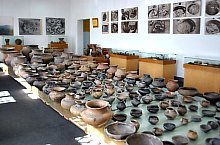
The Monument of the Romanian Soldier was erected at the initiative of the Culture and Art Committee of Maramures region and was unveiled on August 23, 1959, and the following year it received its current form. It was sculpted by Andrei Ostap, in collaboration with the architect A. Damboianu and mounted by a group of artists from Fondul Plastic Bucuresti. It is built of stone and cement, having, in the highest part, 890 cm. The fight and reconstruction scenes are made in the meplat technique.
In honour of the heroes who fell in duty in these fierce battles of the Second World War, memorial crosses were arranged around this monument with the names of those who gave their lives for the integrity and freedom of the Romanian state.
By Merlaș Daniela
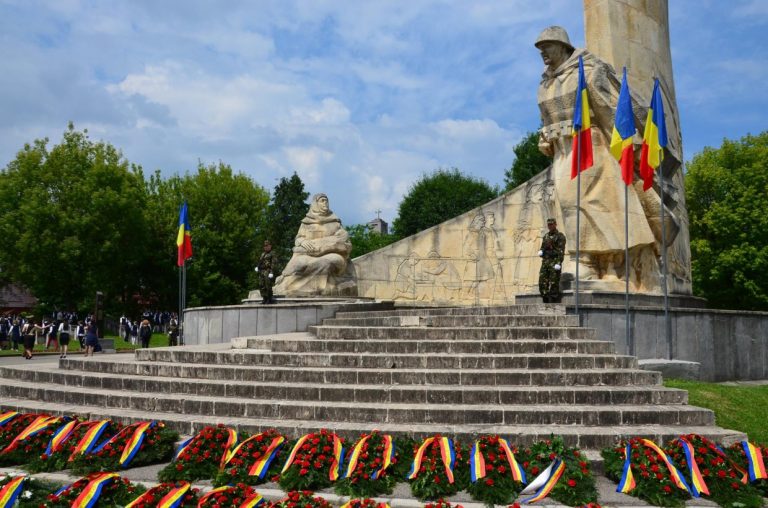
THE VILLAGE MUSEUM opened on May 30, 1981 after a work started in 1972. It contains over 30 households specific to the Maramureș area. In addition to the Romanian households, they were also present built a Ukrainian, a Hungarian and two Jewish houses. There is also a church in this place sea which is the oldest building, built in the 16th century and built of materials from a older church.
By Buda Iohana
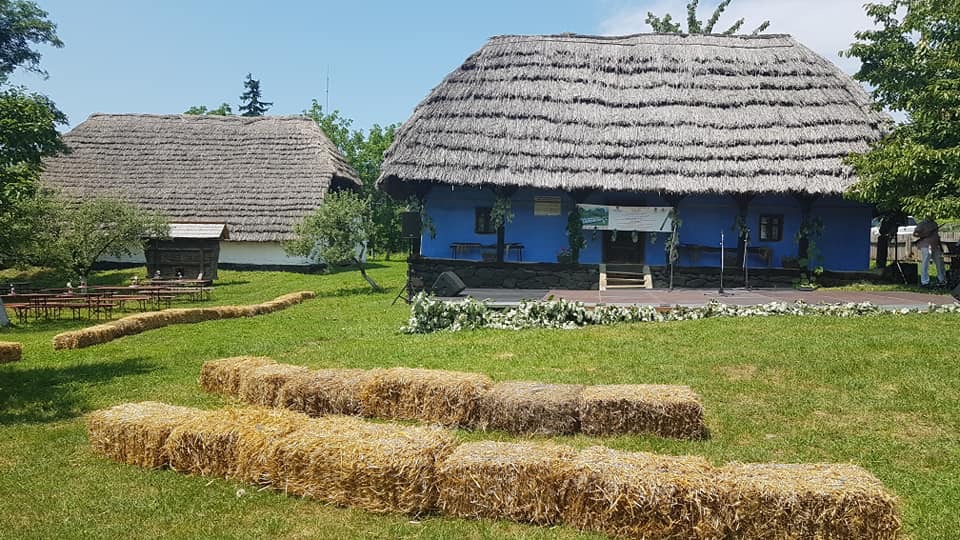
Published: Jan 25, 2022
Latest Revision: Jan 25, 2022
Ourboox Unique Identifier: OB-1270049
Copyright © 2022








